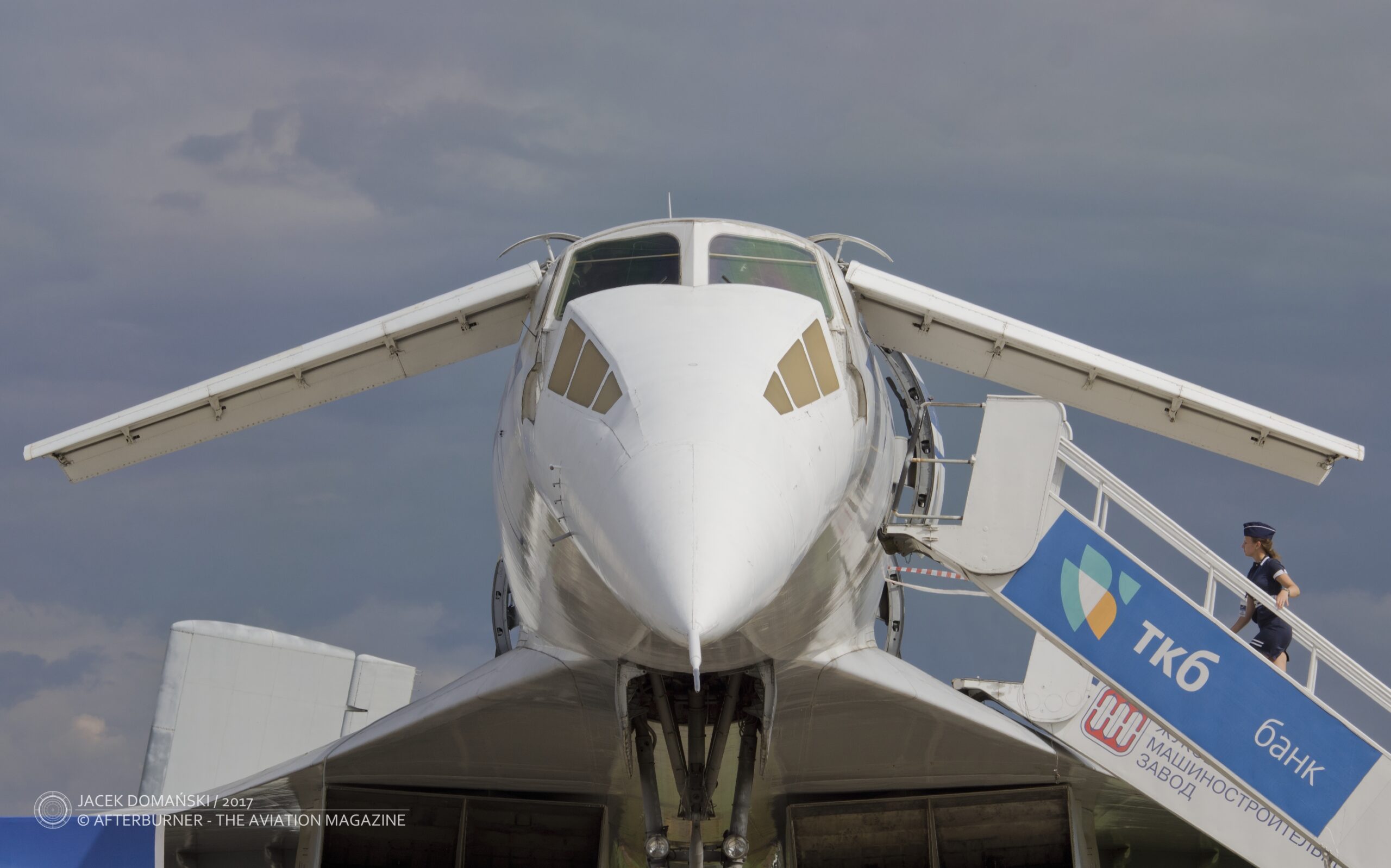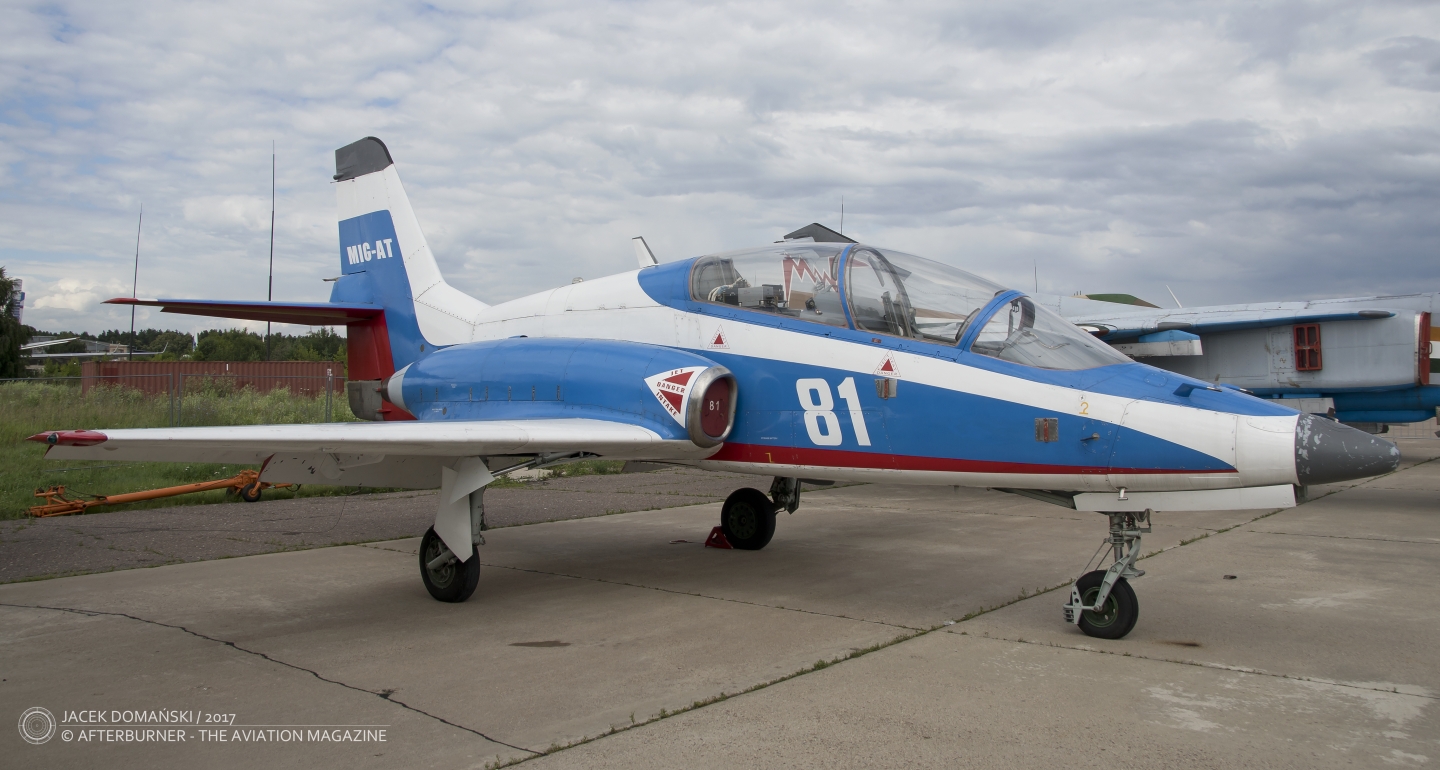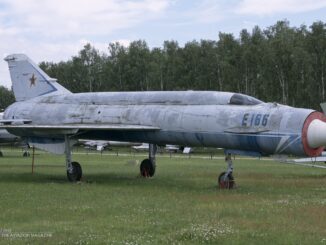
Face-to-face with Tupolev Tu-144D / Ту-144Д (CCCP-77115), a Soviet supersonic passenger airliner (SST), exhibited at XIII International Aviation and Space Salon MAKS-2017, July 2017.
On 31st December 1968, the first prototype of Tu-144 performed its maiden flight from Zhukovsky airfield, in this way becoming the very first commercial supersonic aircraft in the world. Just two months later, the British-French Concorde followed, taking-off from Toulouse.
Although both aeroplanes are quite similar in appearance, there are several significant differences between them, regarding construction, powerplant and flight characteristics. However, several speculations claiming that Tu-144 was a result of business intelligence exists, and – partially due to those rumours – the Soviet aircraft was sometimes nicknamed ´Concordski´.
Regrettably, the initial test and demonstration flights resulted in two accidents, that have broadly echoed in the aviation world. The first one occurred in 1973, during Tu-144 demonstration flight at the Paris Air Show – the entire crew of six was killed plus additional eight people on the ground. Another one was registered in 1978, when the aircraft tested before delivery to ´Aeroflot´ airline caught fire at 3,000 metres and then crashed near Yegoryevsk, killing two of eight people on board.
The world´s first SST started its operational service on 26th December 1975, flying with mail cargo to Alma-Ata (today Almaty, Kazakhstan) and the first passenger flight was performed on 1st November 1977. Shortly it was discovered that economic efficiency of the Soviet SST is very low, especially after the increase of oil prices. In addition, during the initial flights Tu-144 suffered several failures that resulted in not reliable service on scheduled flights.
The operational service of Tu-144 was ceased just seven months after the first passenger flight, on 1st June 1978. One of reasons that caused this decision was the abovementioned accident in Yegoryevsk. Until that day, all Tu-144 performed only 102 commercial flights, 55 of them with passengers (carrying 3284 passengers in total).
A few years later, in 1983, the entire Tu-144 programme was officially closed. However, the existing aircraft were still used as airborne laboratories and training aircraft for the Soviet space programme, with the final flight of Tu-144 performed on 26th June 1999. Most of the surviving aircraft were later handed over to museums or displayed on open air.
The Tupolev Tu-144D (also designated as ´004D´), registered as CCCP-77115, was one of the seven aircraft equipped with RD-36-51A engines and representing the modernized variant of the original design. It was the last completed and airworthy Tu-144, used for test and training purposes between 1984 and 1986, performing 54 flights in total.
CCCP-77115 is being stored at the Gromov Flight Research Institute grounds at Zhukovsky and regularly displayed at International Aviation and Space Salon MAKS, being organized there every two years.



